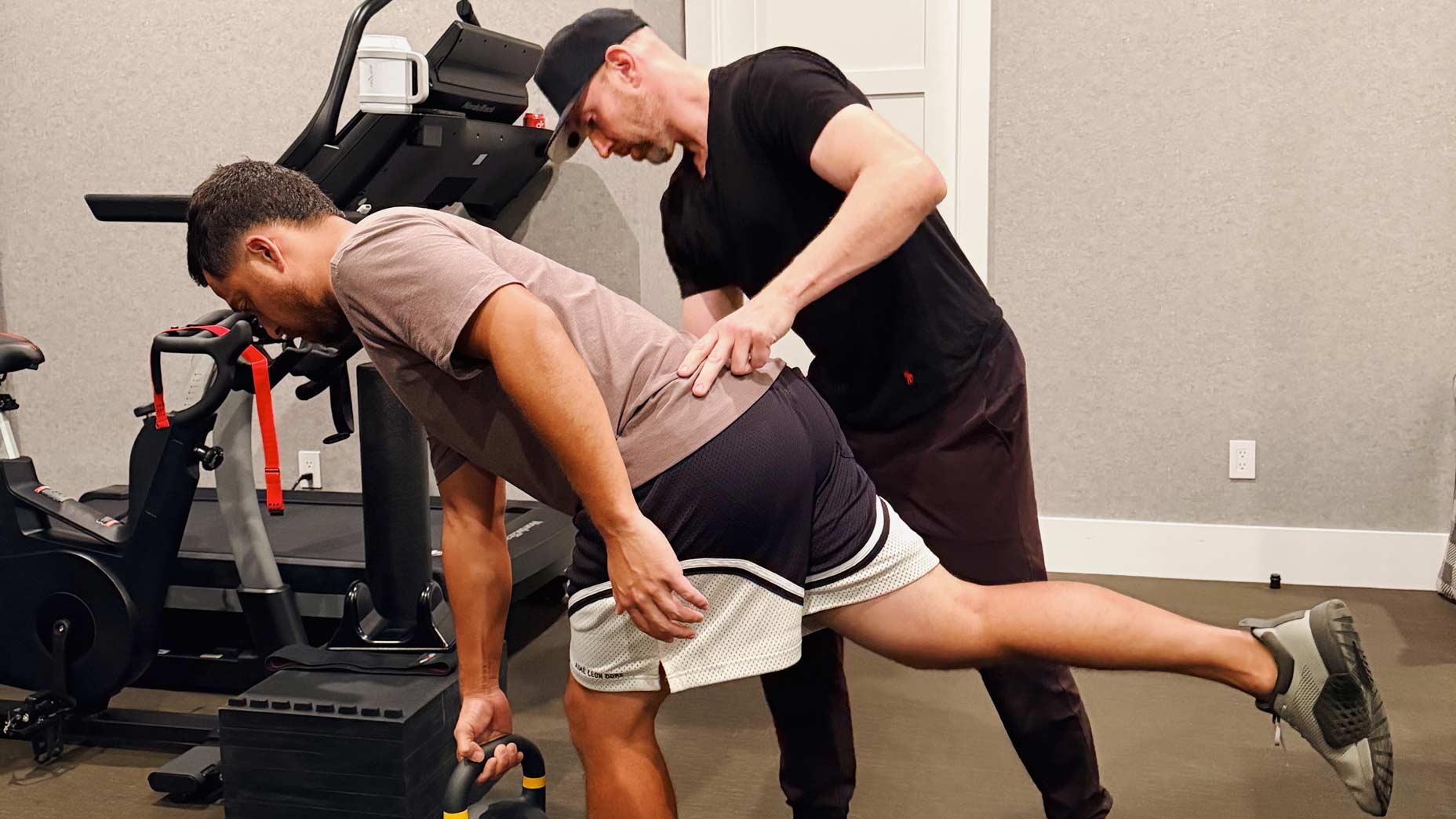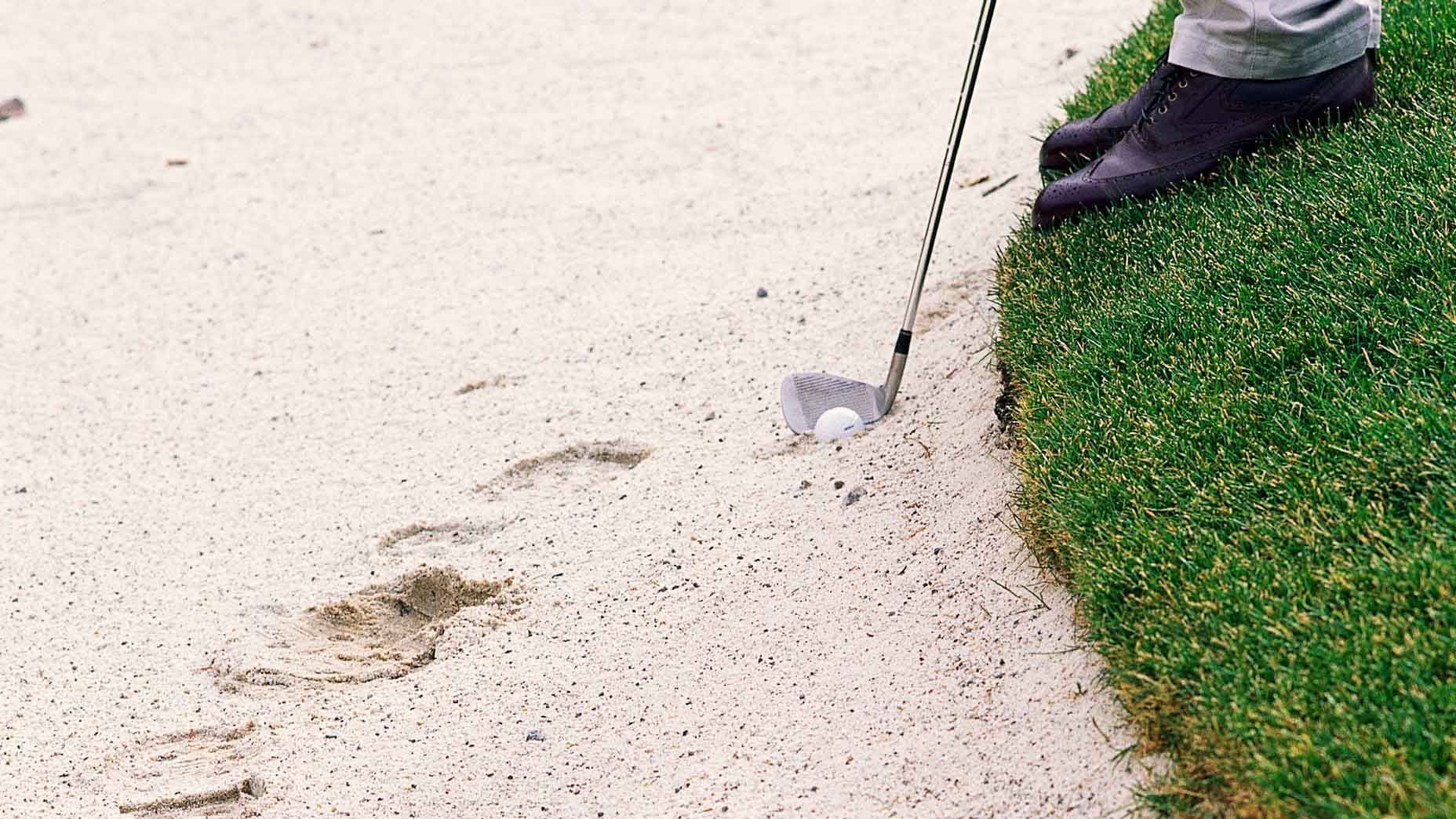Welcome to Shaving Strokes, a GOLF.com series in which we’re sharing improvements, learnings and takeaways from amateur golfers just like you — including some of the speed bumps and challenges they faced along the way.
During a recent round at my favorite golf course, Chambers Bay (host of the 2015 U.S. Open), I discovered something in my game that reinvigorated both myself and my confidence — the final score doesn’t matter. You may think I’m crazy for suggesting that, but hear me out.
Since I became GOLF’s instruction editor over a year ago, there’s been one constant from nearly every Top 100 Teacher I’ve worked with: Stop focusing on the result — which, for someone as cerebral as me, is nearly impossible.
As humans, we’re basically programmed to focus on the outcome. We often stress about our performances at work, wonder more about the future than the present and can display traits of imposter syndrome even once we do see success.
Golfers are no different — and in some cases, worse!
When you’re out on the practice range, you’re not just there working on your swing fundamentals, you’re there to see the fruits of such labor, ensuring you see the results from any changes. Unfortunately, the game doesn’t always instantly provide that.
That’s where appreciating the process and celebrating even the smallest victories can make a difference in your performance — and it took me until my recent round at Chambers Bay to fully understand that.
Like previous rounds at Chambers, I played just above bogey golf, shooting 93 this time around. But unlike those previous rounds, it was a different kind of 93, as I had an opportunity to shoot 88 heading into No. 17.
Reflecting on my round, I wasn’t just left encouraged about how I played — other than a handful of shots that ballooned my score because of poor decisions — but I actually came away with some great lessons, too.
So what did I learn? Take a look below to see how refocusing on smaller wins and ignoring my scorecard made for the best 93 I’ve ever shot.
5 tips I learned during a recent round at Chambers Bay
For those who have yet to play Chambers, I highly suggest doing so. It’s absolutely stunning, offering views of the Olympic Mountains and overlooks the Puget Sound in Tacoma, Wash. Its links-style layout is both forgiving and daunting, with bunkers that stretch nearly the entire length of holes, and tricky fescue that lines most fairways.
The greens are, in a word, intimidating.
As I’ve mentioned before, prior to playing Chambers Bay for the first time, the starter cautioned me with the following warning: “You’ll see lots of dinosaurs and elephants beneath the putting surfaces” — meaning the slopes and run-offs are capable of completely wrecking a round.
This course requires precision, and even a “good” start to a shot often ends up being a nasty result if you’re not dialed in on your distance control.
As nasty as this course can be, it taught me a few lessons that have allowed my golf game to improve.
1. Use an effective warm up routine
There are many times where I show up to a golf course too late to even get a warm up in, so the fact that I had about 30 minutes before teeing off at this most recent round at Chambers was already a win.
Using a more focused type of practice made it even better.
Warming up vs. stretching: What’s the difference and how can it help your golf game?By: Rachel Bleier
Instead of just unleashing my driver, I used a stacked approach, hitting my 7-iron at 50 percent, then 75 percent and finally at a 100 percent stock shot. This helped me find my tempo before making my way to the first tee, while also showing me the type of shot I was working with (which happened to be a fat draw on the range).
By understanding this, I was able to work on compressing the ball during my warm up, emphasizing ball-first contact.
2. Creativity matters
Whether it’s within 100 yards or sitting 240 yards away on a long par-5, a common error my fellow mid-handicappers make is falling in love with a specific club. In the former scenario, it might be the lob wedge, whereas the second scenario almost always leads to either a 3- or 5-wood.
But it doesn’t have to!
At Chambers Bay, creativity can be your best friend, with the layout welcoming things like stinger shots — which use a low ball-flight that can roll to your desired target. I deliberately used these a handful of times with great results.
Same thing goes for around the greens, where a chip-putt can be a more effective play than using a higher-lofted wedge. It’s a safer shot, and, in my Chambers round, eliminated any risk of mishitting a wedge.
3. Positive reinforcement matters
The buddy I played with is a self-described pessimist and often allows his negativity to impact his golf game. On the other hand, I’m an enormous optimist, which helped me believe I could hit certain shots that, deep down, I probably had no business attempting.
A good example is on No. 12 at Chambers (“The Narrows”), which is a short par-4 that measures about 280 yards uphill. It’s actually the hole with the most amount of birdies in U.S. Open history, so, with a solid tee shot, you can reach the green.
I was even par after the first two holes on the back nine during this most recent round, so my confidence was sky high. Stepping up to the tee box, I blocked out any anxiety and gave it a rip — hitting the front right of the green and leaving me with a long (and slopey) eagle putt.
While my friend attempted to get into my head, I read my first putt nearly perfectly, watching it roll uphill, downhill, left and right before it stopped about four feet from the cup.
How a ‘delusional positive mindset’ carries this LPGA starBy: Sean Zak
I took a deep breath, went through my process, encouraged myself to make the putt (not worrying about the outcome) and, boom, buried it for a birdie. That’s right — one under through three holes on the back nine. It didn’t hold, but what a feeling.
4. Identifying ‘the why’
One of the things I’m beginning to learn about golf is this: it’s not about the how, it’s about the why. As in why did you hit a good shot versus why did you hit a bad shot, or why did a couple of holes lead to high scores? I was able to identify this during my round at Chambers Bay. I identified six shots that killed any hope of shooting low-80s (if not breaking 80 for the first time). Ironically enough, they all came off the tee.
Due to six slices with my driver, I found myself wanting to play hero ball to make up for the mishit — especially since three of them went out of bounds, so I was trying to play catch up.
Instead of simply blocking out the bad tee shot, taking my medicine, and doing what I could to score low, I escalated the problem by pressing — which piled on the strokes.
Here’s a friendly reminder: Don’t focus on your score and just stay in the present! Had I done that, my scorecard may have looked a few shots better.
5. The importance of lag putting
It’s not always easy, but understanding how to shift your mindset when putting is a huge factor in limiting putts per round — which is where lag putting comes into play.
During previous rounds at Chambers Bay, I (stupidly) always aimed for the hole, thinking I was going to make some miracle putt. When that happened, the ball would either take off on me and roll past the hole and off the sloped green, or come up way short.
In other words, I had to be perfect.
By learning the importance of lag putting, I was able to concentrate and trust my green-reading skills, which, in effect, allowed me to accept two-putts and actually avoid (most) three-putts — although I still did so on three holes.
My first-ever Chambers round produced a whopping 42 putts, whereas this round was “only” 34. That’s a big improvement — and came by shifting my putting strategy.
Some of these tips might seem obvious — and may even be things you already do. But it took me until this most recent round at Chambers Bay to fully embrace and trust in them, which led to a more enjoyable round that didn’t always focus on the outcome or score.
So while shooting 93 fails to meet my expectations, knowing that it was just six tee shots that, ultimately, influenced my scorecard more than anything — and not chronic mistakes in other areas of my game — I came away confident and ready to go low the next time I play.

Rapsodo Mobile Launch Monitor (MLM)
View Product












